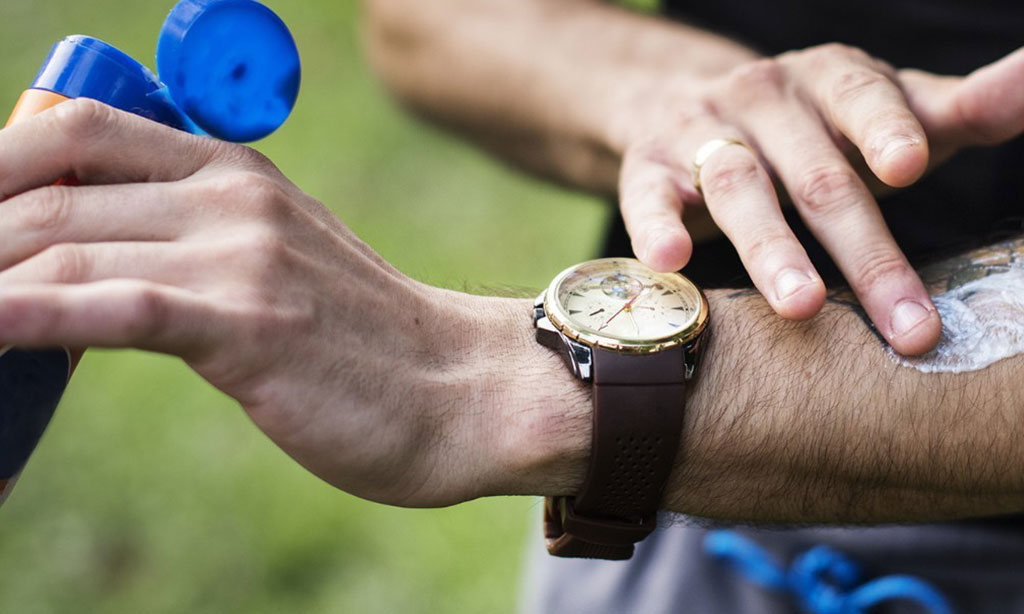Fun in the Sun

With the sunny weather finally upon us, many of us will be getting outdoors for some much-needed fresh air. With increasing awareness of the harmful effects of the sun’s UV rays causing photo-aging, sunburns, and skin cancers, sun protection is a staple in any outdoor activity. On cloudy days, 80% of the UV rays from the sun can still penetrate through the clouds to reach your skin. Even darker skin tones are not immune to the sun’s damaging effects. In fact, darker skinned individuals are more likely to develop aggressive forms of skin cancer as they are diagnosed at later stages. Regardless of skin type or season, sun protection should be an essential part of your daily routine.
Sunscreens are one form of photoprotection to keep your skin safe from the harmful effects of the sun. Sunscreens come in two flavours: inorganic (physical) and organic (chemical). Inorganic filters (or mineral sunscreens) contain compounds that are chemically inert and physically reflect and prevent UV rays from penetrating the skin, such as zinc oxide and titanium dioxide. Organic filters (or chemical sunscreens) on the other hand, contain biologically active chemicals such as oxybenzone, avobenzone, 4-methylbenzylidene camphor (4-MBC), octisalate, octocrylene, homosalate, and octinoxate that absorb light and create a chemical reaction whereby the light is converted to heat.
Recent studies have shown that approximately one to two percent of topical chemical sunscreens get absorbed into our bloodstream, but have been proven to be both medically and biologically inconsequential. What is more concerning is the effect that these chemicals have on our environment. The chemicals from sunscreens have been identified in treated and untreated water sources worldwide; have been implicated in bleaching coral reefs leading to their death; and affect our marine wildlife in a process called bioaccumulation, whereby the amount of chemical is higher in organisms than the water around them, causing additive detrimental effects to animals as we move up the food chain.
Mineral sunscreens on the other hand, do not get absorbed or affect the environment in the same way as chemical sunscreens. Given their inert nature, mineral based sunscreens are ideal for babies and people with sensitive skin, and offer immediate protection, unlike chemical sunscreens which require 20-30 minutes for absorption. Due to their non-absorbable nature, mineral sunscreens can be harder to apply and leave a thick film on the skin, but newer formulations have a smoother finish, such as Elta-MD’s UV Clear and LaRoche Posay’s Anthelios 50 Mineral.
What about SPF? Sun damage is mostly caused by two forms of ultraviolet radiation: UVA and UVB. UVA causes photoaging and indirect DNA damage through the production of reactive oxygen species by penetrating deeply into your skin. UVB has shallower penetration into the skin and causes redness and direct DNA damage. It is important to protect yourself from both UVA and UVB rays. Sun protective factor (SPF) only reflects the sunscreen’s ability to block UVB rays, so look for labels with “Broad Spectrum” which indicates protection against both UVA and UVB rays.
Surprisingly, higher SPF does not always mean superior protection. Some studies have demonstrated higher risk of sunburns and skin cancers with higher SPF use, due to increased intentional sun exposure. So what sunscreen is right for you? It is recommended to use a broad-spectrum sunscreen with SPF 30 or more, and reapplying every 2-3 hours to ensure adequate sun safety.
Remember that sunscreen is only one form of photoprotection, and it is important to always seek shade when outdoors, especially during peak UV levels (10 a.m. to 2 p.m.). Photoprotective clothing is an excellent, safe, and inert form of UV protection and should be used regularly in the form of swimwear, wide-brimmed hats, sunglasses, etc. Remember a few easy steps to being sun safe: slip on clothing, slop on sunscreen, slap on a hat, and seek shade! (SunSmart Program, Australia).
